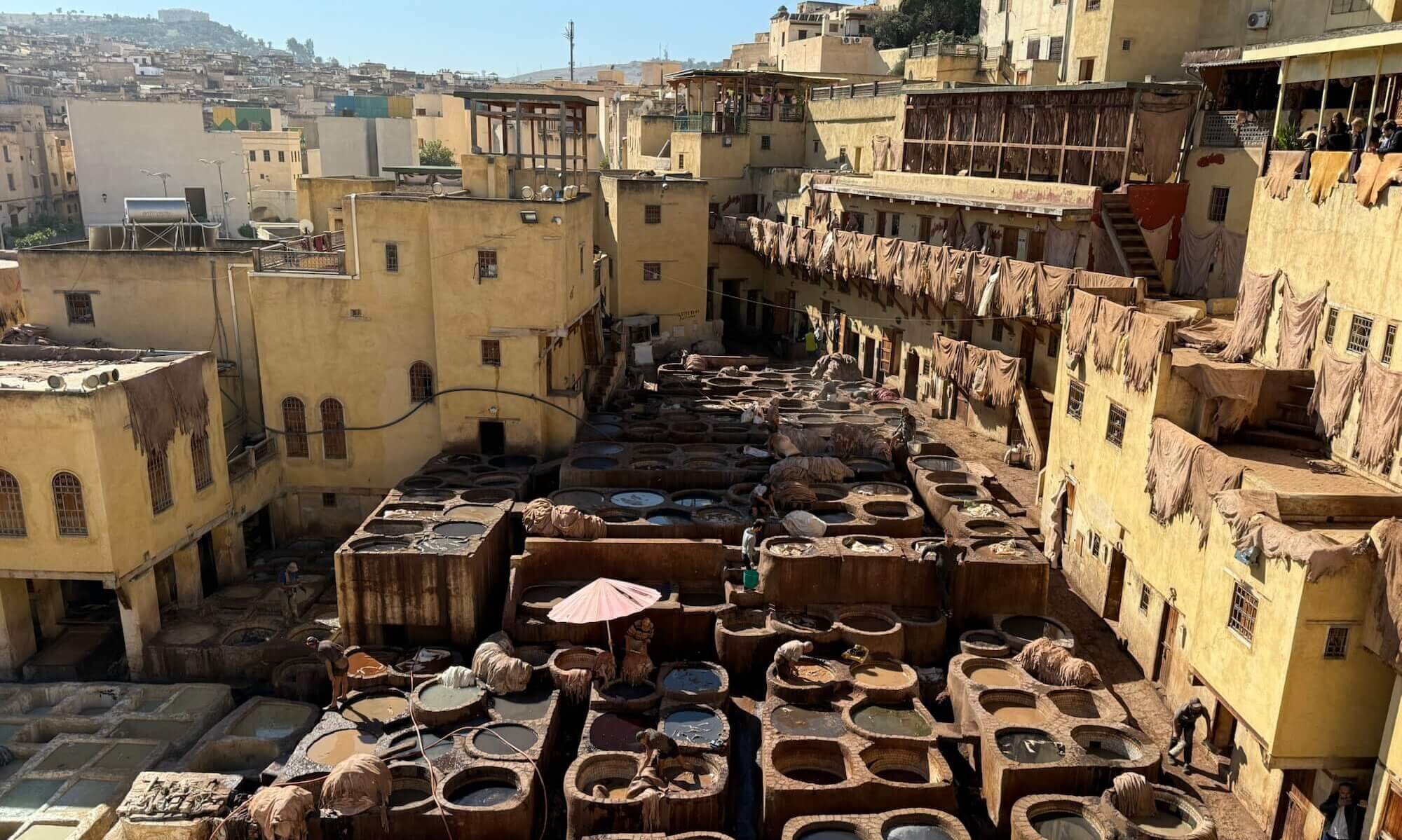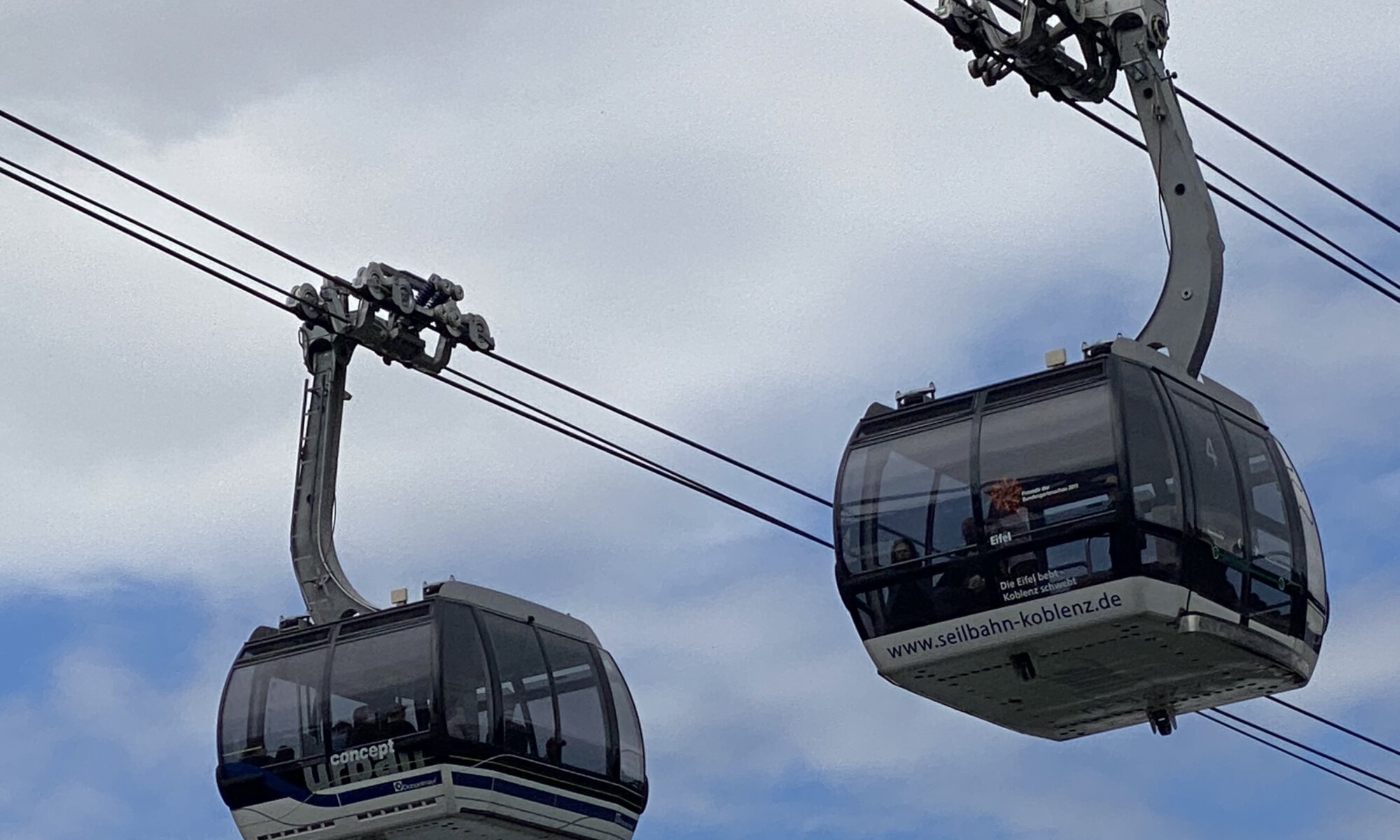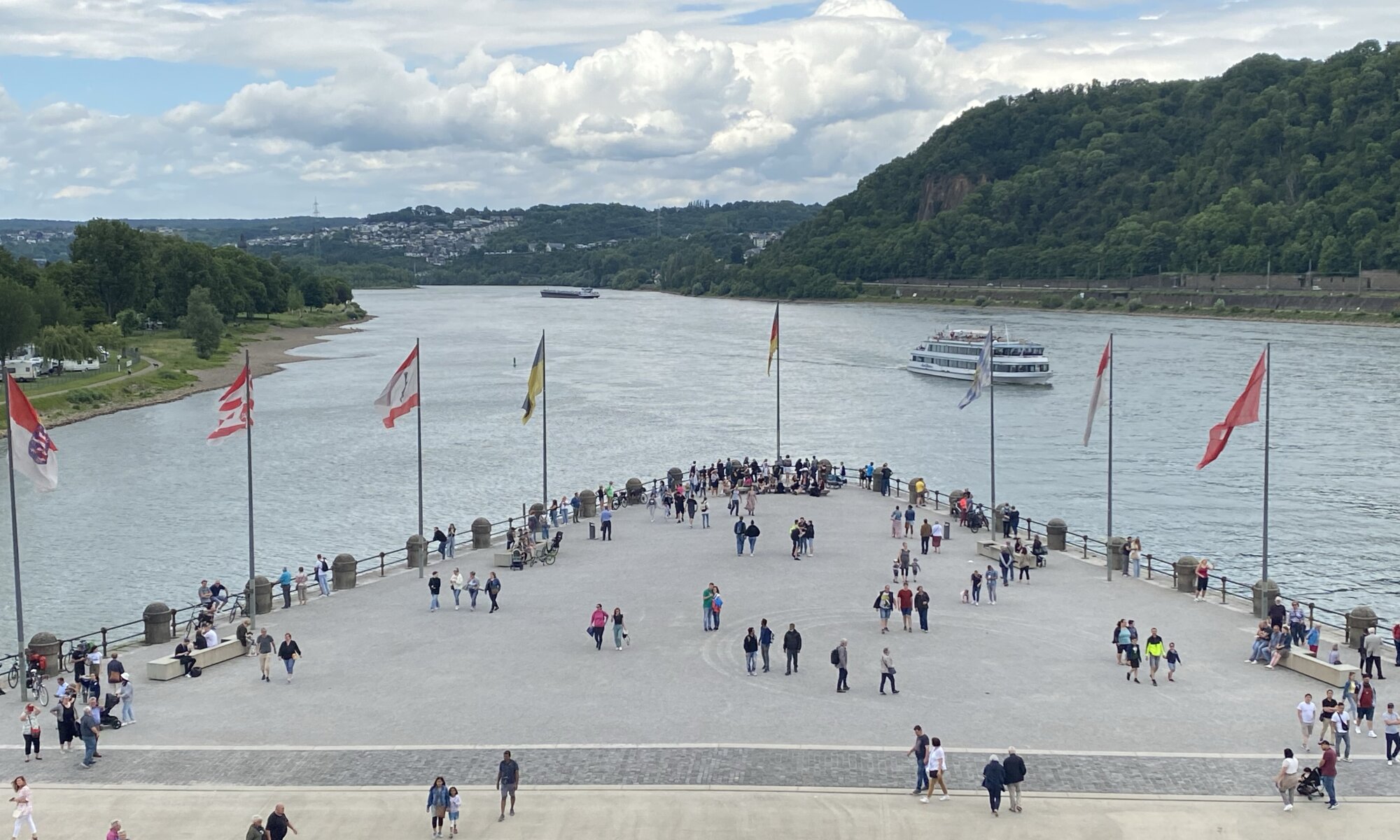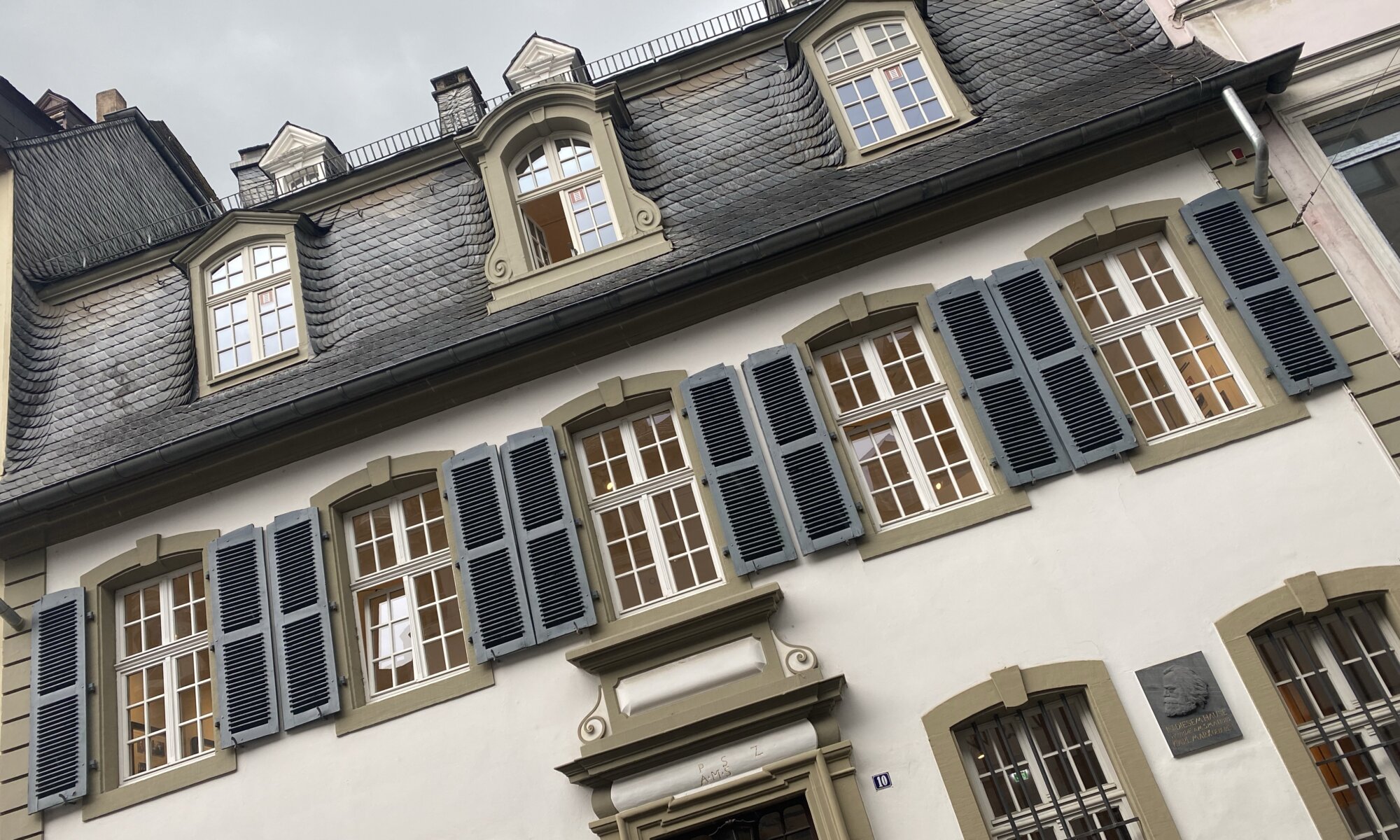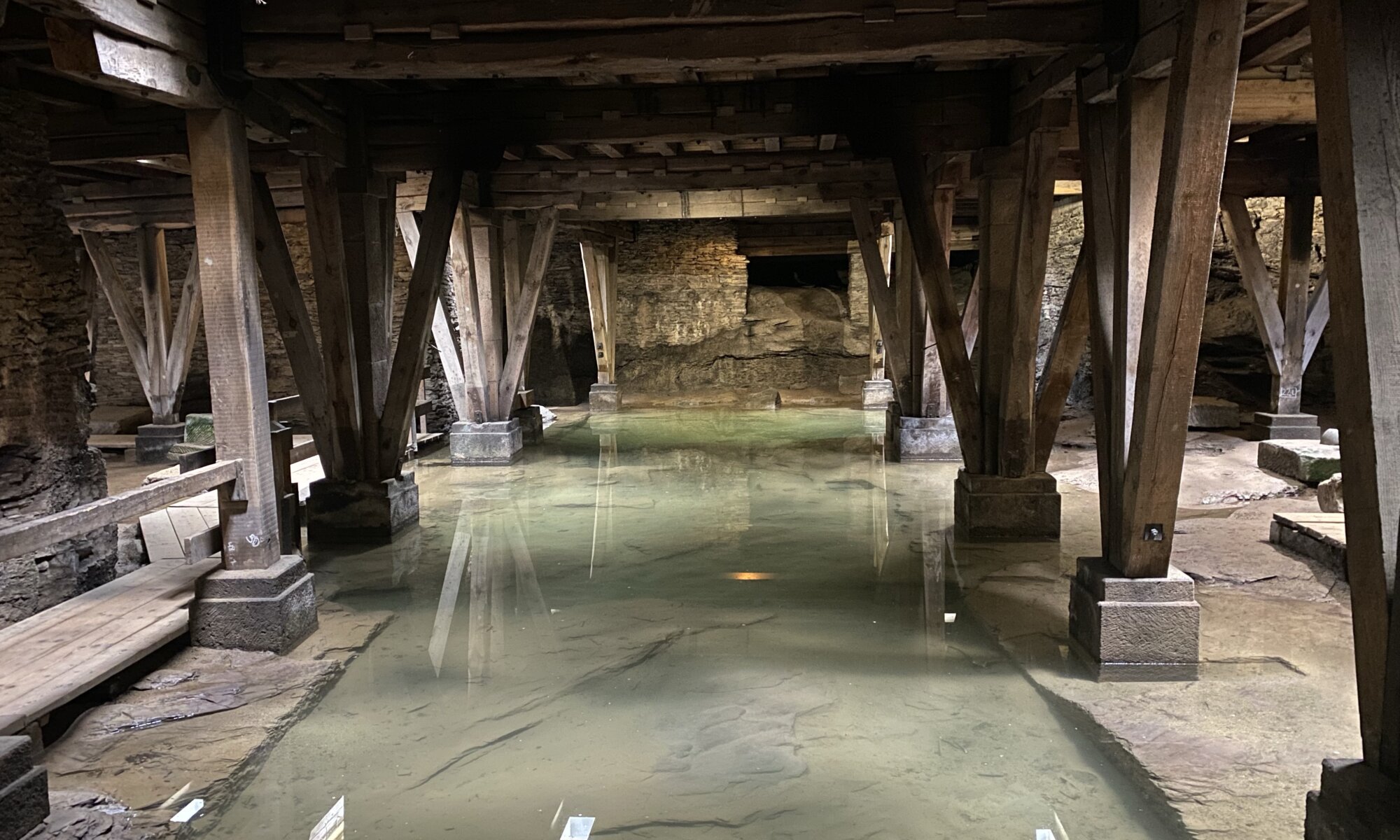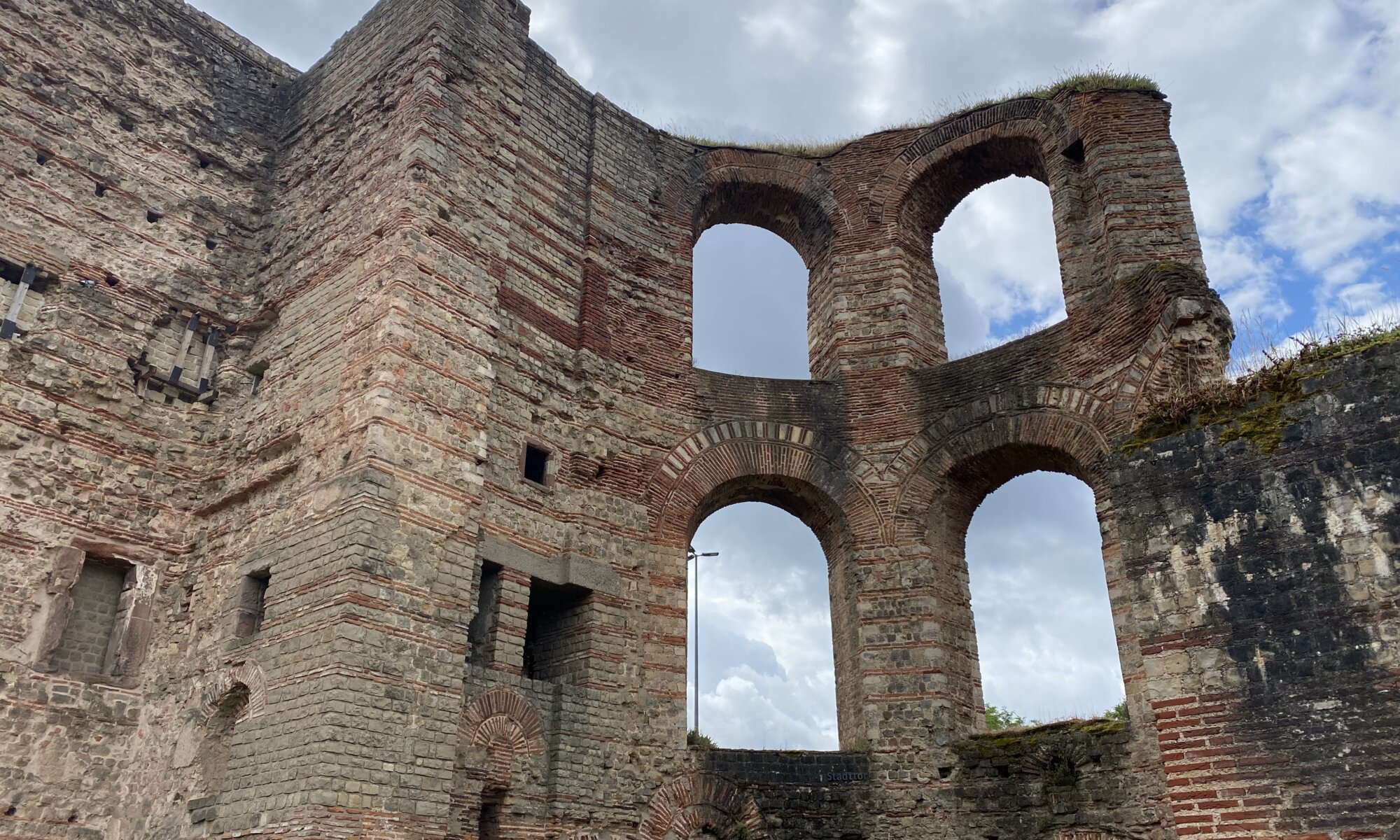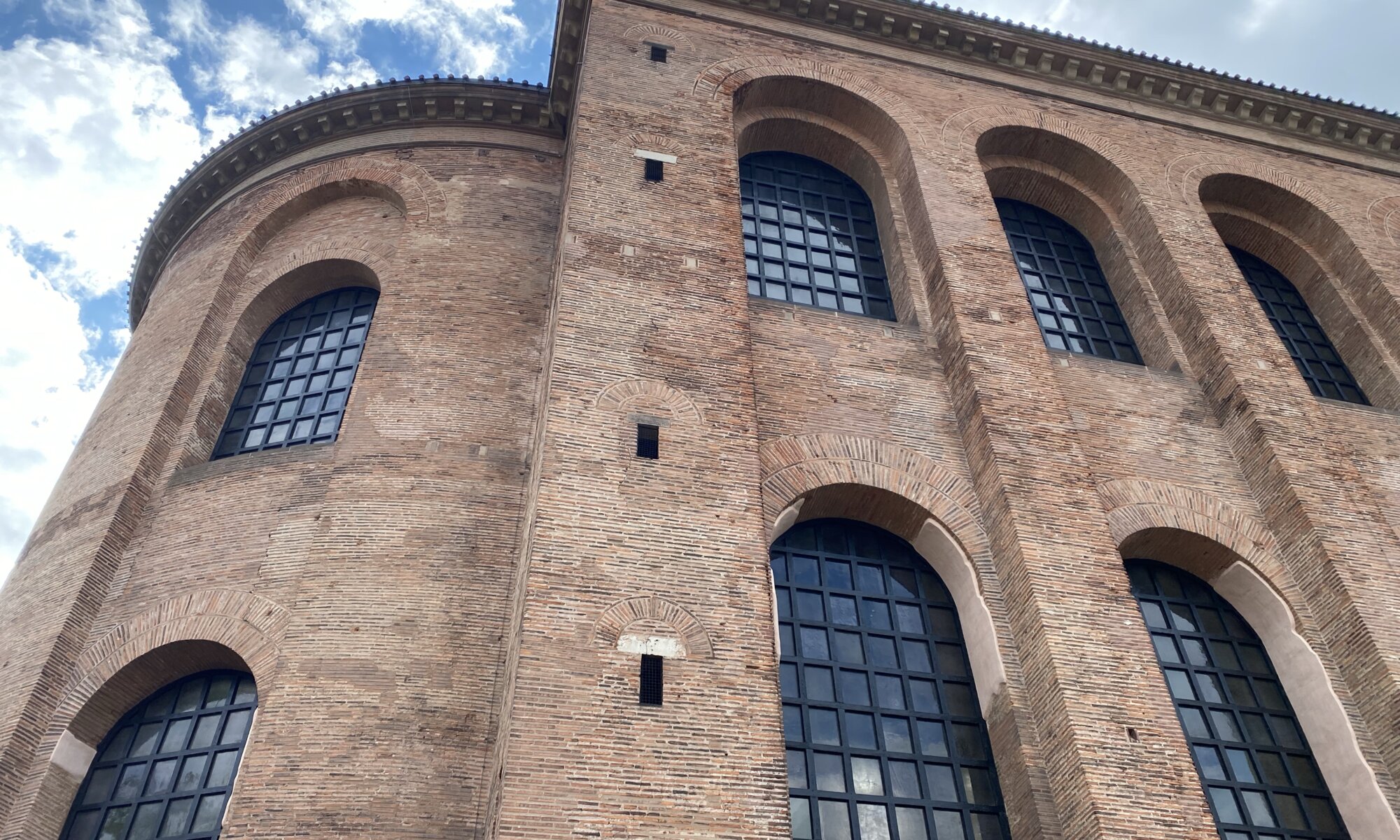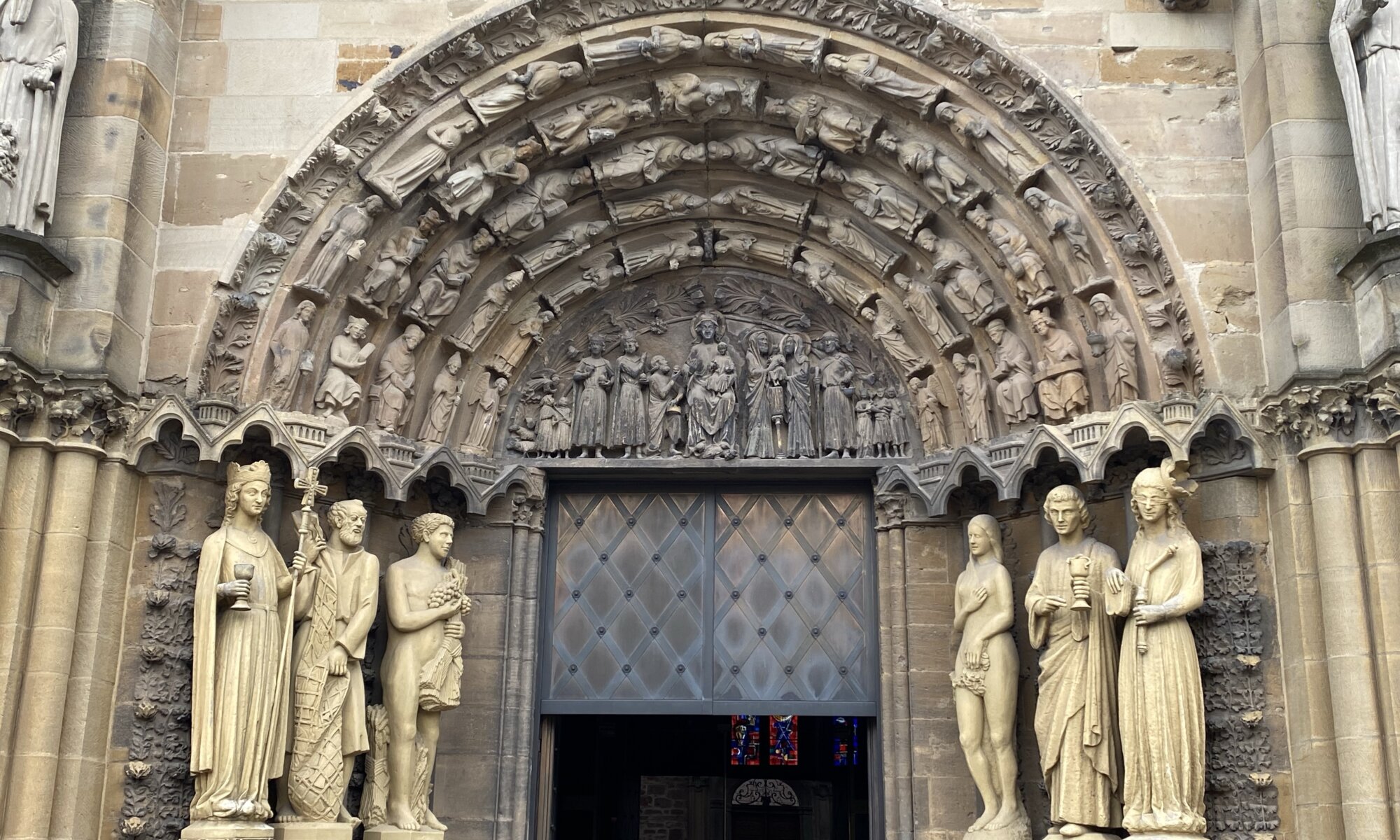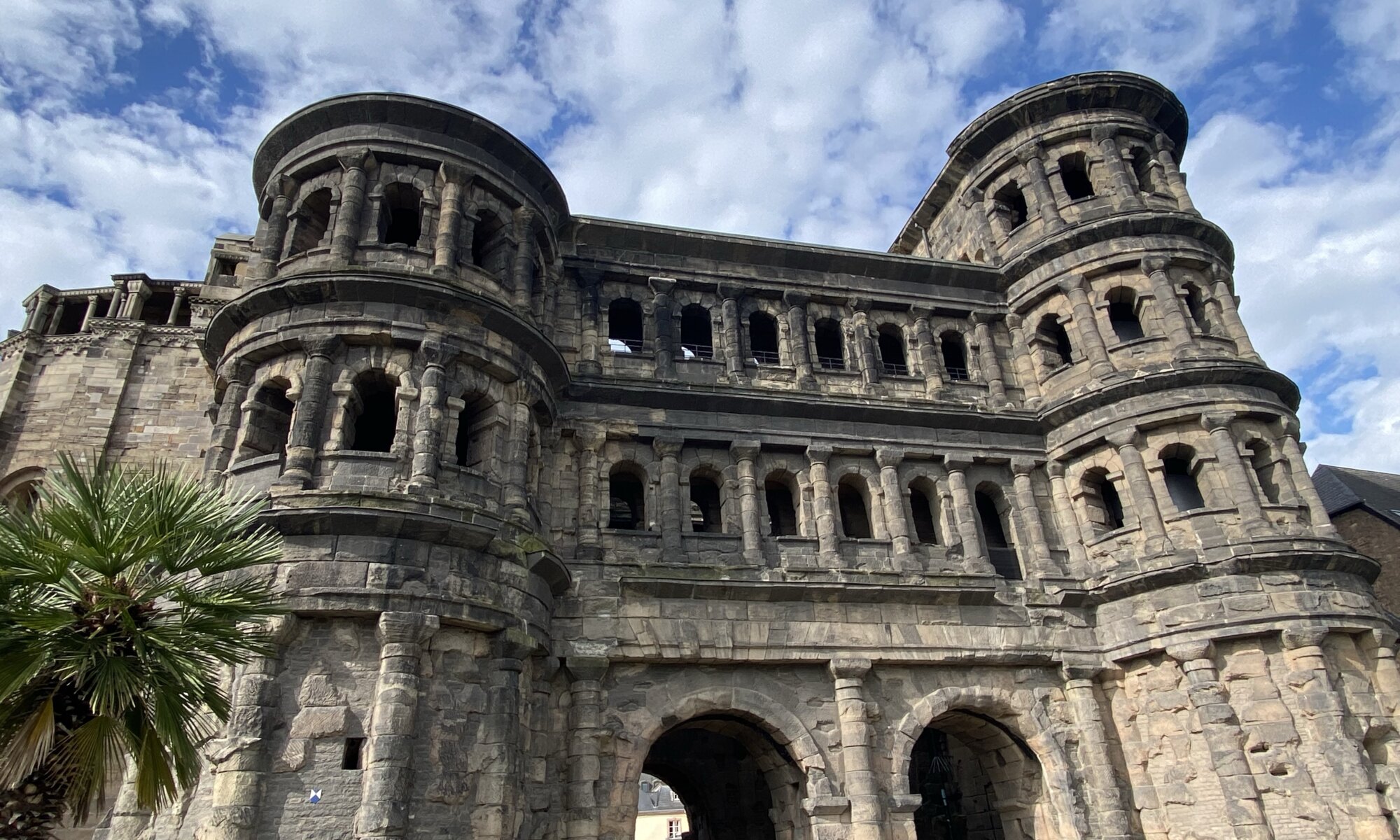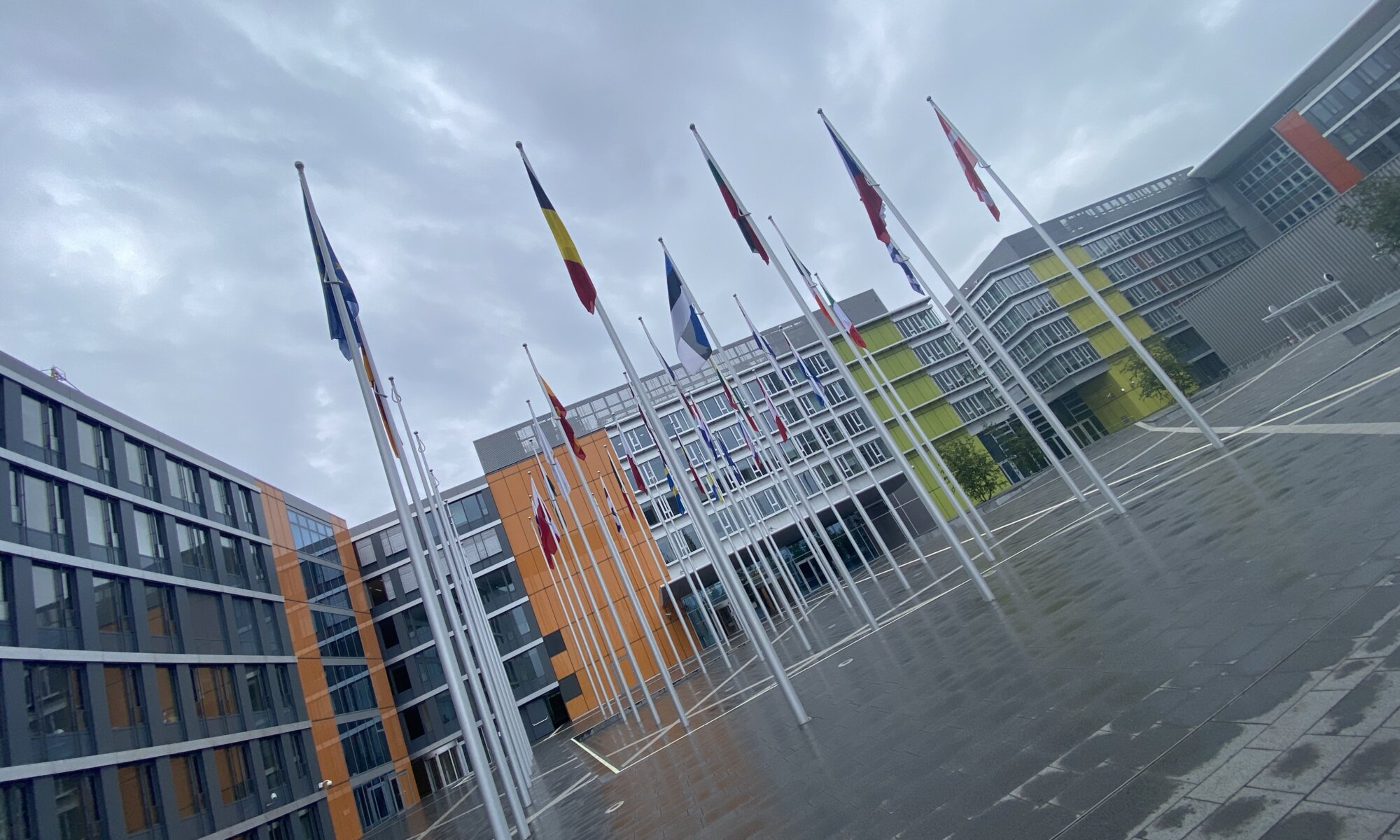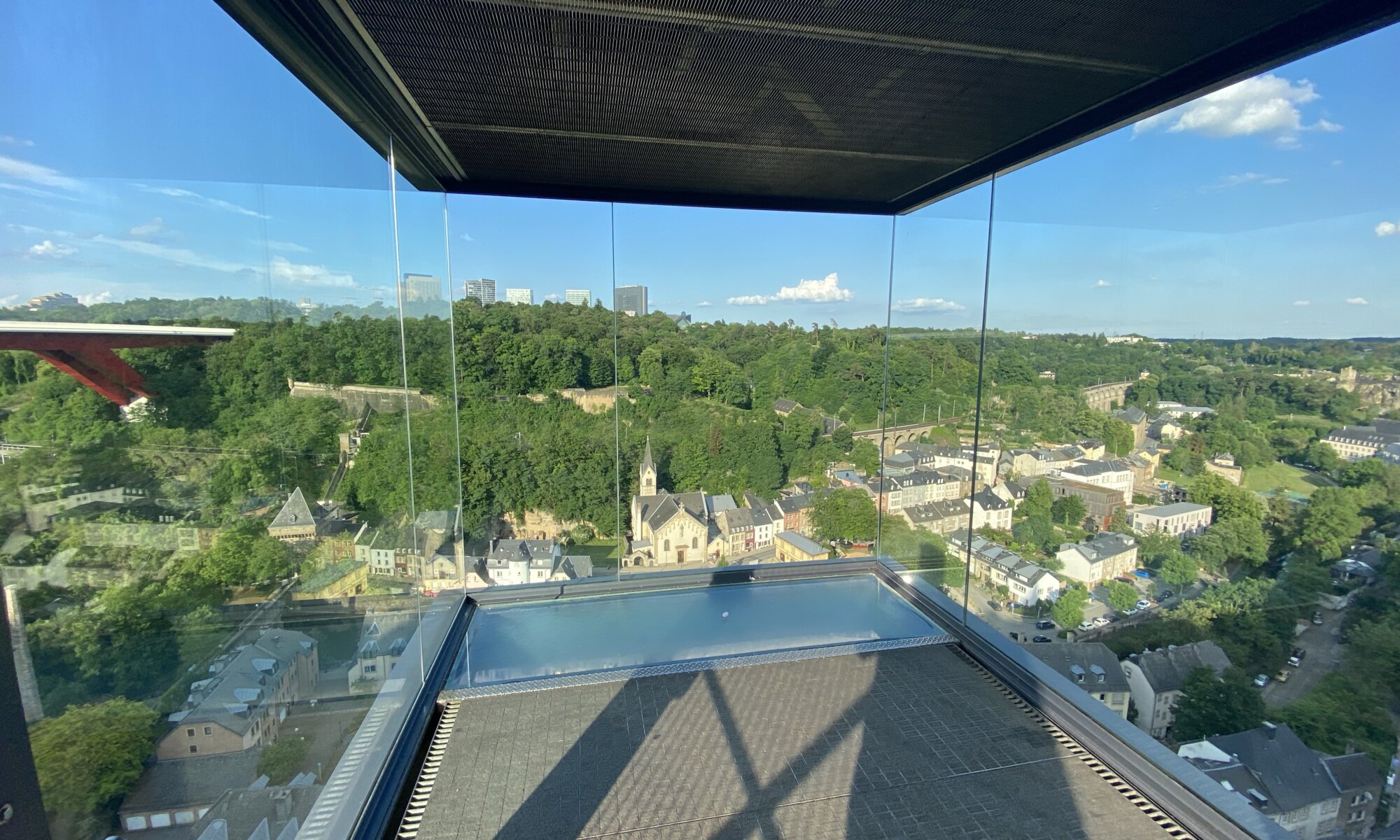The Festung Ehrenbreitstein is located on the opposite side of the river Rhein when standing at the Deutsches Eck in Koblenz. You could access the fortress with its roots in the 16th century on foot, by car or via a funicular in the south. But there is also another way to get up with marvelous views: the cable car starting close to the Deutsches Eck.
Continue reading “Up and away”Deutsches Eck
Every year a lot of tourists visits a land tongue at the confluence over the rivers Mosel and Rhein: the Deutsches Eck at Koblenz. On it you can find the Kaiser-Wilhelm-Denkmal, a problematic memorial when looking at the design and the inscriptions. It features the monarchy and nationalism, it includes the former eastern parts of Germany (east prussia, silesia and pomerania) in the list of German federal states.
Continue reading “Deutsches Eck”Birthplace of Karl Marx
Most people in the world probably know Karl Marx: the author of the Communist Manifesto and Das Kapital (Capital: A Critique of Political Economy), the father of Marxism and famous thinker of the Socialist and Communist world. But did you know that he was born at Trier, Germany?
Continue reading “Birthplace of Karl Marx”Underneath the arena
Slightly outside the city center but only a short walk away from the Kaiserthermen of Trier you can discover the ancient Roman Amphitheater. The arena is well-preserved and it is easy to image where the visitors were seated and how the ‘games’ happened.
Continue reading “Underneath the arena”Bathing with the emperor
One of the main sights of Trier are the Kaiserthermen: ancient roman baths. It is today mostly a ruin, but you can still see some arcs standing and walk through the underground tunnels that have been restored. What can still be seen is astonishing as the building dates back to the year 300 CE. It was used by the Romans as a public spa and also as a military ground.
Continue reading “Bathing with the emperor”Konstantinbasilika
The massive Konstantinbasilika at Trier is a special church. The architecture is plain, the walls are high and inside this house of prayer is mostly undecorated. When the Roman emperors used this place in the fourth century it was a hall for audiences.
Continue reading “Konstantinbasilika”Liebfrauenkirche & Dom
The Liebfrauenkirche of Trier is one of the oldest Gothic-style churches in Germany (together with the Elisabethkirche of Marburg). Therefore it is enlisted in the list of UNESCO world heritage sites and very well worth a visit! What might be confusing at first sight is that the cathedral of Trier and the Liebfrauenkirche (two separate churches) are directly connected to each other.
Continue reading “Liebfrauenkirche & Dom”Porta Nigra
The Porta Nigra is simply amazing: a decorated and well-preserved Roman city gate at Trier. You can enter the building and climb up three floors to enjoy the architecture and wonderful views on the city. The gate to the city Augusta Treverorum was built from the year 170 CE on, but it was never finished.
Continue reading “Porta Nigra”European quarter
Luxembourg is home to different European institutions: it is one of the seats of the European parliament, but also the court of justice, the court of auditors and the investment bank can be found there. These institutions are all located on the Kirchberg plateau northeast of the ancient city.
Continue reading “European quarter”Panoramic lift
Yes, it is only an elevator. But one that can trigger your fears and can give you wonderful views on Pfaffenthal and Kirchberg belonging to Lëtzebuerg. Whether you want to explore the lower city and the former fortifications or if you want to cross on foot over to the European Quarter, the lift saves you from climbing up the hill to the Uewerstad. It looks futuristic, needs around 30 seconds for a trip and was opened in 2016.
Continue reading “Panoramic lift”